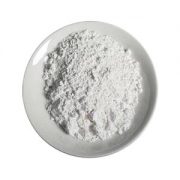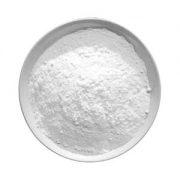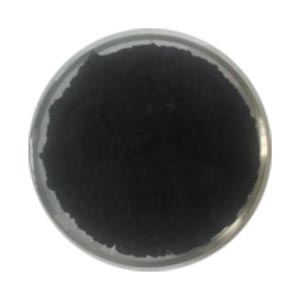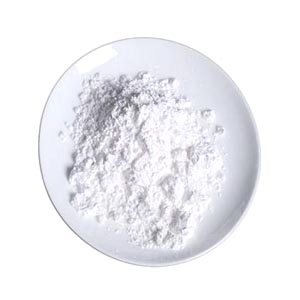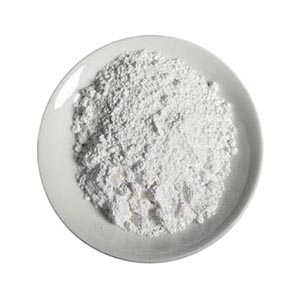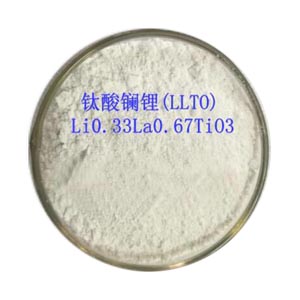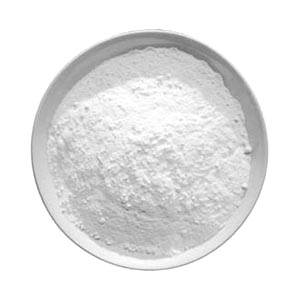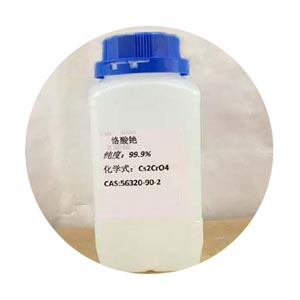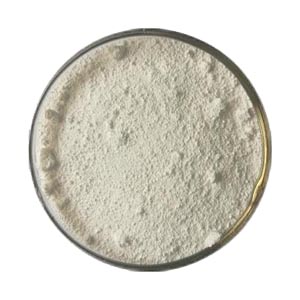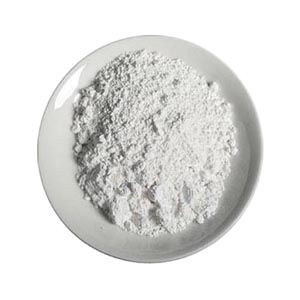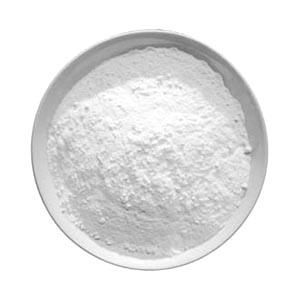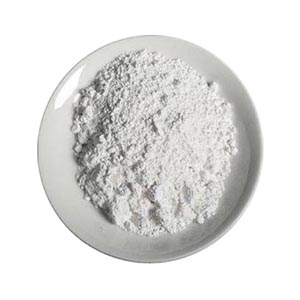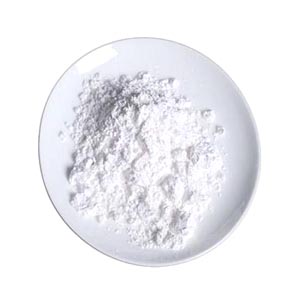
Caesium fluoride
Other name: Cesium fluoride
CAS no. : 13400-13-0
EINECS no. : 236-487-3
Molecular formula: CsF
Molecular weight: 151.9039
Melting point: 682℃
Boiling point: 19.5 ° C at 760 mmHg
Solubility in water: 369 g / 100 mL (18℃)
The vapor pressure, 922 MMHG at 25°C
- 描述
- Inquiry
Purity: 99.9%
Other content:
Lithium 0.001%
Sodium 0.01%
Potassium 0.01%
Rubidium 0.02%
Impurity content:
Aluminum ≤0.005%
Calcium ≤0.005%
Magnesium ≤0.005%
Iron ≤0.01%
Silicon ≤0.0005%
Lead ≤0.001%
Hazard: Toxic
Nature:
Colorless cubic crystals. Hygroscopicity. At 18 ° C, 100 ml of water can dissolve 367 g, and 191 g can be dissolved in 100 ml of methanol at 15 ° C, which is insoluble in dioxane and pyridine. The refractive index (n18D) is 1.478±0.005. Irritating. Can cause burning.
Use :
Barium fluoride is a good base in organic chemistry, mainly because its fluoride ion is not strong nucleophilic. Studies have shown that the efficiency of Knoevenagel condensation of cesium fluoride is higher than that of potassium fluoride or sodium fluoride. In addition, since cesium fluoride is suitable for desiliconization protecting groups, it can convert many organosilicon compounds into organosilicon fluoro compounds and one carbanion by reacting with tetrahydrofuran or dimethylformamide.
In the Suzuki cross-coupling synthesis reaction, as a base, a positive substitution for biaryl; also as a nucleophile for the fluorination of primary halides and sulfonates in protic media such as tert-butyl or tert-amyl alcohol A catalyst for the reaction of a silicon enol ether with a carbonyl compound; for the efficient synthesis of a single crystal Dion-Jacobson phase CsLaTa2O7 for use in photocatalysis and superconductivity.
Barium fluoride can also be used to remove the silicon-based protecting group by a desilylation reaction.
Barium fluoride is also an important raw material for introducing fluorine into organic compounds. For example, cesium fluoride and hexafluoroacetone react to form perfluoroalkoxy sulfonium salts, which are stable below 60 °C and much more stable than the corresponding potassium and sodium salts. Since far infrared rays can easily pass through the crystals of barium fluoride, the crystals of barium fluoride can be used for infrared spectroscopy.
Crystal structure:
The crystal structure of cesium fluoride is a reverse rock salt type. The ruthenium ion in the crystal is larger than the chloride ion, and the cations in the lithium, sodium, potassium and cesium halides of the same group are smaller than the anion. In addition, in the crystal of yttrium fluoride, the yttrium ions are formed in the closest packing and the fluorine ions are embedded in the inside.
相关产品
-
Cesium tungstate
English alias: Cesium tungsten oxide (Cs2WO4); Cesium tungstate. Dicesium tungsten tetraoxide; Dicesium; Oxygen anion (2); Tungsten; Dicaesium dioxido (dioxo) tungsten
CAS no. : 13587-19-4
EINECS no. : 237-019-0
Molecular formula: Cs2O4W
Molecular weight: 513.6485
-
Cesium iodide
Other name: caesium iodide
CAS no. : 7789-17-5
EINECS no. : 232-145-2
Molecular formula: CsI
Molecular weight: 259.8099
Melting point: 626 ℃
Boiling point: 127 ° C at 760 mmHg
Solubility in water: 74 g / 100 mL (20 ℃)
Vapor pressure: 13.8 mmHg at 25 ° C
-
Sodium pyroantimonate
CAS no. : 12507-68-5
Molecular formula: NaSb(OH)6
Molecular weight: 246.787
-
Lithium lanthanum titanate
Li (x) La (2/3-x) TiO3
Purity: 4N
We can supply ( LLT ) powder and target material, welcome contact us!
This material used in lithium battery solid electrolyte, ion conductivity superior performance, is the direction of development of lithium batteries.
-
Rubidium Stearate
-
Cesium chromate powder
Other name: Dicaesium dioxido(dioxo)chromium
CAS no. : 56320-90-2
EINECS no. : 236-640-4
Molecular formula: CrCs2O4
Molecular weight: 381.8046
Density: 4.237 g/mL
-
Potassium Sodium Titanate
KNaTiO3
Sodium potassium titanate is a new additive, the product uses a special process to completely solve the problem of easy absorption of potassium titanate products. Potassium titanate can reduce the arc voltage, stabilize the arc, reduce the splash, the use of superior performance, fine weld. Can be widely used in low hydrogen electrode, AC and DC electrode, and stainless steel electrode and flux cored wire
-
Lithium acetate dihydrate
Name: Lithium acetate dihydrate
Alias: Acetic acid, lithium salt, dihydrate
CAS Number: 6108-17-4
EINECS number: 208-914-3
Molecular formula: C2H7LiO4
Molecular weight: 102.0156
Melting point: 56-58 ° C
Boiling point: 117.1 ° C at 760 mmHg
Flash point: 40 ° C
Water solubility: 29 g / 100 mL (20 ° C)
Steam pressure: 13.9mmHg at 25 ° C -
Lithium Iso Propoxide
Other name: Lithium isopropoxide; lithium propan-2-olate
CAS no. : 2388-10-5
Formula: C3H7LiO
Molecular weight: 66.0281
Boiling point: 73 ° C at 760 mmHg
Flash: 11.7 ° C
Vapor pressure: 81.3 mmHg at 25 ° C
Properties: water absorption decomposition, soluble in alcohol, benzene, tetrahydrofuran and other organic solvents.
-
Rubidium fluoride
Other name: Rubidium monofluoride
CAS no. : 13446-74-7
EINECS no. : 236-603-2
Molecular formula: FRb
Molecular weight: 104.4662
Melting point (℃) : 775.
The boiling point (℃) : 1410.
Relative density (water =1) : 3.56.
The saturation vapor pressure (kPa) : 0.13 (920 ℃).
Solubility: soluble in water, insoluble in ethanol, ether, liquid ammonia, soluble in hydrofluoric acid.

